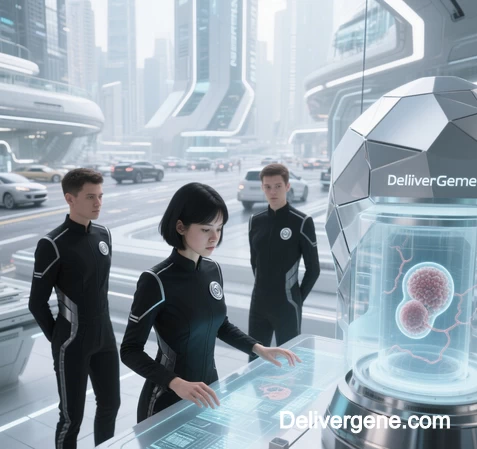
1. Foundational Synergy: Redefining Vaccine Design through Synthetic Biology
Synthetic vaccines represent the pinnacle of convergence between biotechnology and synthetic technologies, leveraging computational design, genetic engineering, and chemical synthesis to create precision-targeted immunogens. This paradigm shift replaces traditional empirical approaches with a rational, modular framework:
- Computational Epitope Mapping: AI algorithms (e.g., NetMHC, VaxiJen) analyze pathogen genomes to identify conserved B/T-cell epitopes, eliminating allergenic or autoimmune-prone regions .
- De Novo Genetic Synthesis: Pathogen antigen genes are chemically synthesized in vitro and optimized for expression in microbial chassis (e.g., yeast, E. coli), enabling rapid antigen production without pathogen handling .
- Self-Assembling Platforms: SpyTag/SpyCatcher systems allow plug-and-display assembly of multi-epitope scaffolds on virus-like particles (VLPs), mimicking natural pathogen geometry .
Suggested Figure 1: Synthetic Vaccine Design Workflow
Pathogen genome → In silico epitope screening → DNA synthesis → Antigen expression in microbial chassis → VLP assembly.
(Colors: Pathogen=red, DNA=blue, VLPs=gold, Epitopes=purple)
2. Core Synthetic Technology Platforms Revolutionizing Vaccine Production
A. Nucleic Acid-Based Systems
| Platform | Mechanism | Advantages |
|---|---|---|
| mRNA-LNPs | Lipid nanoparticles deliver nucleoside-modified mRNA encoding antigens into host cells, inducing endogenous protein expression. | – Speed: 40-day end-to-end production – Adaptability: Rapid redesign for variants |
| DNA Vaccines | Engineered plasmids express antigens under mammalian promoters. | Thermostable; no cold chain |
B. Peptide-Carrier Conjugates
- Solid-Phase Peptide Synthesis (SPPS): Fmoc/t-Boc chemistry constructs epitopes up to 50 aa with >95% purity .
- Carrier Fusion: Epitopes conjugated to immunogenic carriers (e.g., KLH, ferritin nanocages) via bioorthogonal chemistry, enhancing T-cell help .
Suggested Figure 2: mRNA-LNP Mechanism
mRNA (purple strand) encapsulated in lipid nanoparticles (gold) fuses with host cell membrane → Ribosomal translation → Antigen presentation.
3. Transformative Applications: From Pandemic Response to Cancer Immunotherapy
A. Accelerated Pandemic Countermeasures
- COVID-19 Case Study: Synthetic platforms enabled 95% effective mRNA vaccines within 11 months—10× faster than traditional methods . Key innovations:
- Codon-optimized spike protein genes synthesized in vitro .
- Modular LNP formulations adaptable to variants .
B. Precision Oncology Vaccines
- Neoantigen Design: Tumor exome sequencing → AI-predicted patient-specific epitopes → SPPS synthesis .
- Clinical Impact: NY-ESO-1 peptide vaccines induced 60% tumor regression in melanoma trials .
C. Complex Pathogen Targets
- Antibiotic-Resistant Bacteria: Synthetic biology redesigns bacterial surface antigens (e.g., P. aeruginosa O-polysaccharide) for effective conjugate vaccines .
4. Comparative Advantages Over Traditional Approaches
| Parameter | Synthetic Vaccines | Traditional Vaccines |
|---|---|---|
| Development Speed | 1–6 months (vs. 5–10 years) | Limited by pathogen culturing |
| Safety | No live pathogens; minimal contaminants | Risk of incomplete attenuation |
| Precision | Avoids non-essential epitopes | Broad immune activation may cause side effects |
| Scalability | Cell-free synthesis; no bioreactors needed | Batch-dependent manufacturing |
5. Future Convergence: AI, Automation, and Global Health Equity
- AI-Driven Manufacturing:
- Predictive QC: Machine learning forecasts sterility failures, cutting release time by 50% .
- Continuous Flow Systems: Microfluidic chips synthesize and encapsulate mRNA in <7 days .
- Democratized Production:
- Portable mRNA Printers: Tabletop synthesizers produce 10,000 doses/day in low-resource settings .
- Lyophilized Formulations: Peptide-MOF composites stable at 40°C for 18 months .
- Next-Gen Platforms:
- DNA Origami Vaccines: Precisely arranged epitope arrays activating germinal centers 5× more effectively .
Suggested Figure 3: Global Vaccine Equity Model
Network of microfactories (gold) producing thermostable vaccines for drone delivery (blue) to remote regions.
Conclusion
The fusion of biotechnology and synthetic technologies has birthed a vaccine revolution characterized by:
- Unprecedented Speed: From genome sequence to clinical doses in weeks (e.g., COVID-19 mRNA vaccines).
- Molecular Precision: Computationally designed epitopes avoiding immune evasion or autoimmunity.
- Democratized Production: Distributed microfactories enabling global access.
Synthetic vaccines are not merely incremental improvements but a fundamental reimagining of immunology—transforming vaccines from reactive treatments to proactive, adaptable shields against evolving biological threats.
Data Source: Publicly available references.
Contact: chuanchuan810@gmail.com
